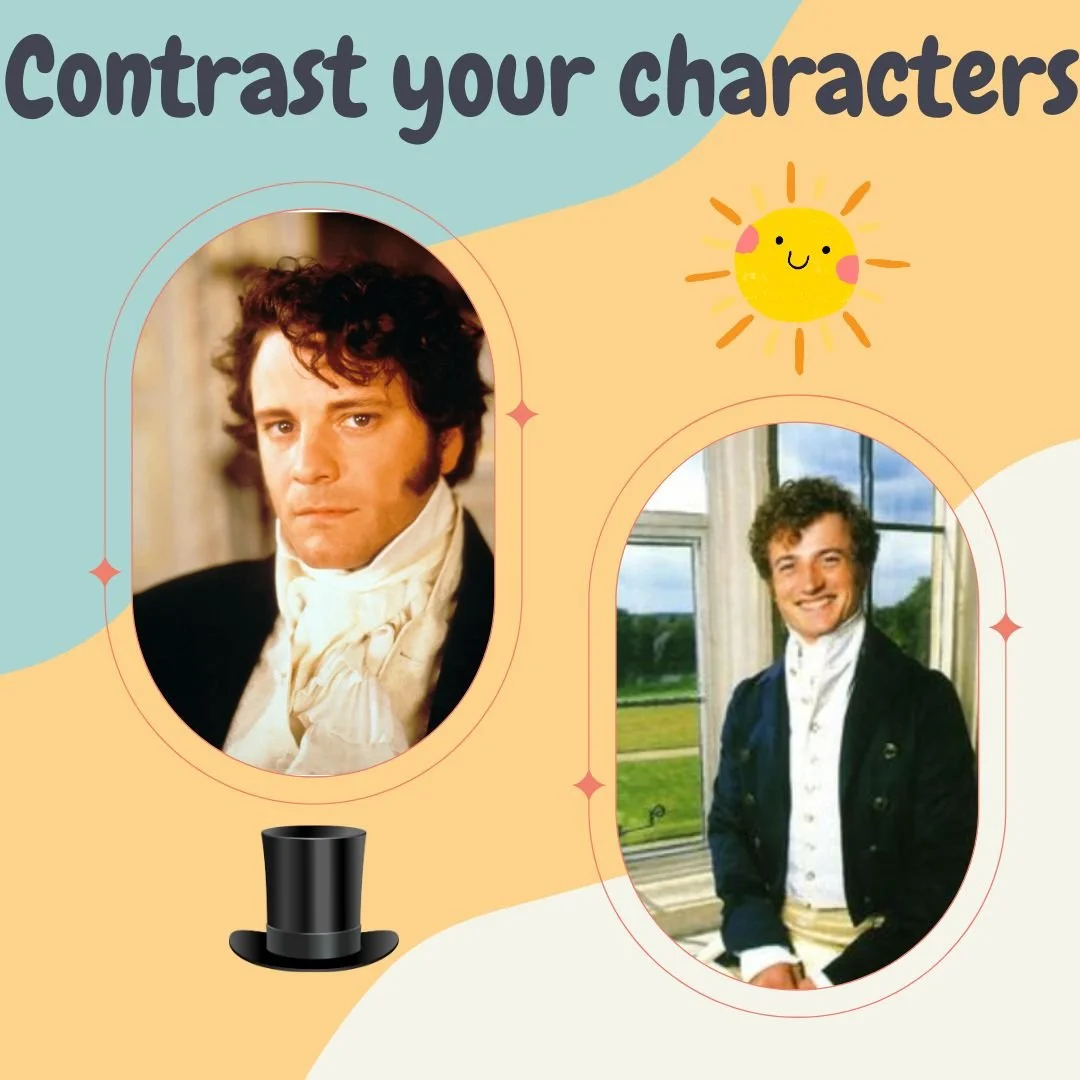Austen creates characters with contrasting opinions, personalities, and values.
This provides her with so many opportunities to show rather than tell and to forward her subplots. She uses this strategy frequently throughout Pride and Prejudice (and all of her books) to excellent effect.
Creating opposing personalities
Darcy is constantly causing offence: he’s reserved, very proud of his station and wealth, can’t be bothered to chat to strangers.
Bingley is fun to be around: he’s cheerful, not overly troubled by rank, and can chat easily with everyon.
“Come, Darcy” said he [Bingley], “I must have you dance. I hate to see you standing about by yourself in this stupid manner. You had much better dance.”
“I certainly shall not. You know how I detest it, unless I am particularly acquainted with my partner. At such an assembly as this, it would be insupportable. Your sisters are engaged, and there is not another woman in the room whom it would not be a punishment to me to stand up with.”
Contrast your characters and …
Within one scene, you can compare two characters’ actions and behavior which provides an excellent opportunity to show their personalities. This is particularly useful if you’re introducing your characters for the first time.
Two characters (even best friends) may disagree on a topic, and by each discussing their point of view, you can create conflict and tension and subtly push forward a subplot.
You can have two characters witness the same event - and each can come to very different conclusions. As the author, you can ensure one is right and the other wrong, which can be very effective in creating or seeding future obstacles.

